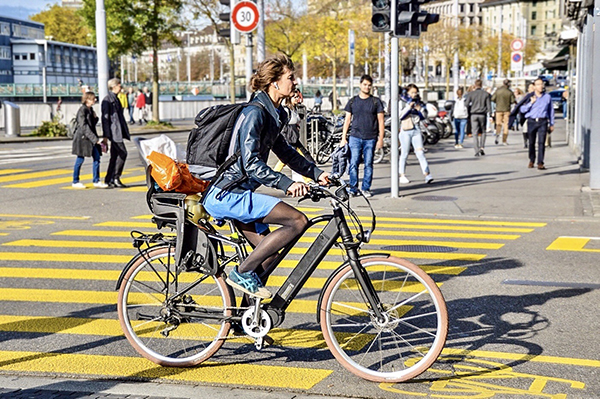Accessibility / Equity / Public Spaces
Five ways to make a gender equal city
This Sunday marks International Women’s Day, a global day celebrating the social, economic, cultural and political achievements of women that has occurred annually since 1911. This year’s theme is #EachforEqual – an acknowledgement that we all play a role in creating a gender equal world. As we at Mobycon reflect on how the work we do builds equity in cities, and where we can also improve our practices in supporting equity, we’ve compiled five steps you can take to making your city better for women – and everyone.

You can’t be it if you can’t see it
From public engagement, to conference speakers and panelists, to the stakeholders in a project group or even you colleagues, if you can’t see a good representation of women in the room, then you are likely not planning with them in mind. Our personal lived experiences influence how we see the world, and how, as planners and designer, we find solutions to mobility challenges. The fact is that despite gains in many countries to balance gender roles in daily life, men and women experience the world differently. Our differences in height, body types and even values have an impact. By aiming to have more gender parity of voices in the room, you have a much greater chance of hearing more balanced approaches and ideas.
Value the trip from A to B…and C, and D….
When it comes to mobility planning, we’re seeing a shift from looking only at the work commute to the shorter, more frequent trips one can make in a day. This is incredibly important because women often make multiple trips under 3kms that have more to do with “care” work rather than more traditional (read: paid) work. Beyond understanding these short trips, however, is making sure those with multiple stops are seen as equally valuable to track. For example, think of the average day of a working mother (or father, of course): she drops off her children at school, and then continues on to work. After work, she stops along the way to pick up some groceries, maybe another stop for treat for their child’s upcoming bake sale, and then picks up her children before heading home again. By looking at trip-chaining as a whole, a greater understanding of where people want and need to travel means creating a transportation network that makes those trips safer and more convenient. As an added bonus, making them practical by walking, cycling or combining them with public transport can also help a city achieve their sustainability goals, too!
All ages and Abilities – Even the teens
Being a teenager can be rough. Many of us would probably prefer to forget the trials and tribulations of those gloriously awkward years between being a kid and becoming an adult. But when it comes to planning and design our cities, often this group can be overlooked – especially teen girls. One of the great successes of Dutch cycling is that teens make up the largest mode share of all people on bikes in the country, and teen girls make up almost half of those numbers. This is not because Dutch teens just “get it” more than their counterparts elsewhere, but rather that the networks in their cities are easy to navigate without much planning, are safe and well lit, get them to the places they want to go (friend’s homes, city centres, and, yes, even school), and is incredibly social because quiet, traffic calmed streets and wide cycle tracks make it possible to ride side-by-side. When teens are seen as a welcome part of the transportation network, the city is all the better for it.
Excuse me? Where’s the ladies room?
This one may seem like a no brainer, but many of our women colleagues can attest to the frustration with a lack of access to toilets in public spaces. And while this may seem like a pretty gender specific issue, ensuring plans and designs for public spaces include these facilities make them more successful for everyone – women, children, seniors, people with disabilities. Assuming over 50% of a community will make do without is a lost opportunity for creating a vibrant space that can be enjoyed by anyone.
Light the way
A well lit space can make all the difference in creating comfortable route option or one to avoid. Women – and let’s be honest, men, too – won’t travel along streets that are dark and unwelcoming, so good lighting is so important when design public spaces. From a mobility perspective, this can also mean avoiding putting cycle routes on parallel, “quieter” streets where people are out of sight and out of mind. Incorporating infrastructure in the busier public realm provides a safe, comfortable option on a well-lit, and often more direct and convenient route. Ensuring your designs – and budgets – include ample lighting to create a warm, inviting public space is an essential way to design a more gender equal city.
This list is by no means exhaustive, and we’re always exploring new ways to incorporate gender planning into our work. Have a project we can help with? Contact us to discuss how we can support your work becoming gender equal.

